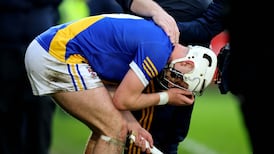Last week the Young Men’s Christian Association (YMCA), a community-based charity operating as a social enterprise, were notably enterprising but distinctly less charitable to Irish sport.
To finance their strategic plan, part of which is to develop three new YMCA Dublin community spaces in the next five years, they told YMCA Cricket Club, which had been playing at Claremont Road in Dublin's Sandymount for more than a century, that they were selling their home venue to the highest bidder.
Literally and metaphorically, they cut the ground from under the club.
The message sent and received by the current Irish champions, who were not invited to take part in the YMCA discussions or decision-making process and were quite prepared to play their part bodily and financially to determine the future of the ground, was that the charity didn’t care too much about the history of Irish cricket or the impact of over 6 acres disappearing in a built-up area.
Uncaring, the wrong impression? Please. The decision to replace green space and a thriving club with concrete was coldly commercial and no more than a latter-day eviction, one callously delivered with little notice. The Young Christians are not a publicly accountable body. Nothing can be done about that.
Misplaced ethos
What that might say to someone like Alan Lewis, a former international rugby referee and international batsman, who played for Ireland 121 times and whose father Ian played for Ireland and whose daughters Gaby and Robyn play for Ireland, is that the value of their service is little, while the value of the land is €10 million. It says history and the club's social value count for nothing.
There may seem something inherently misplaced about that ethos as there is in selling land at the highest possible value in order to sell houses at the highest possible cost and in the process remove community facilities. But we have a system, which facilitates that.
Ten years ago in the United Kingdom, they introduced the Localism Act of 2011 precisely to prevent what is currently taking place on Claremont Road. The Act allows local community groups to nominate land or buildings in their area as valuable assets and ask their local authority to place them on a register. It is called the Asset of Community Value (ACV) provision.
Listing a local sports facility as an “ACV” means that if private land or facility owners want to sell the grounds for houses, apartments or offices, clubs have rights to protect themselves. Within four years of the introduction of the Act, there were more than 1,800 successful ACV nominations in all types of buildings and land including 66 playing fields and 100 other sports facilities.
It came about because they were weary of prime land used for sport being picked off by property developers. They watched on as populations grew denser and sporting facilities shrank away and then vanished.
The upside at Sandymount is that people in the club believe the grounds are sterilised pursuant to an agreement between the YMCA charity and Dublin City Council. They say it says as much in section 38 of the Local Government (Planning and Development) Act 1963. What that means is there are restrictions on how much of the land developers can build.
The club believes it is a binding agreement that was entered into as a condition imposed by An Bord Pleanála, when the front of the ground was developed some time ago.
Rezoned land
If the land is zoned Z1 then residential properties can be built and if it is zoned Z9 it is green space where building is not permitted. The club maintains that a majority of the cricket ground, 6.1 of the available 6.6 acres, is green Z9.
The downside is just as land can be zoned as green, it can also be rezoned. Whoever buys the land is likely to apply for it to be rezoned. This is not easy and it is going to require a vote of the council to change the development plan.
To do that, they must convince planners that evicting a club that caters for men, women and children across different nationalities in order to build expensive houses, is in the best interests of the residents of Sandymount, many of whom are members.
The cricket club, like the hockey club who fled to a new home in Wesley College years ago, operate on a rolling year-to-year lease. Such short-term leases make it difficult for clubs to think big and invest heavily. To attract significant grants, leases have to be agreed over years. Why invest huge sums in a ground if the club can be ejected the following year.
The cricket club have ambitious plans for the ground. It is where they want their future to be. They want to leave to the next generation a facility that is in better order than the ground that was left to them by their parents and while there is considerable anger that 100 years of residency can be swept aside, they hope dialogue on the matter can be reached.
The positive thing is that Claremont Road’s problem is cricket’s problem. It is Sandymount’s problem. It is Dublin’s problem. It is Ireland’s problem and it is all of our problem because it asks how come so often we know the price of everything and value of nothing.











